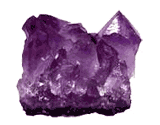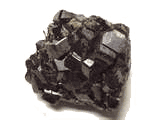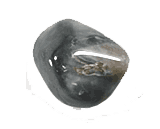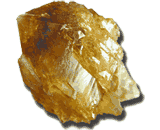| Gemstone Chart |
 Natural Alexandrite Natural Alexandrite
Alexandrite was discovered in 1830 in the Ural mountains of Russia. Alexandrite is also found in Sri Lanka, Brazil, India, Tanzania, Zimbabwe, and most recently in Madagascar. The alexandrite variety of chrysoberyl is one of the rarest and most sought after of all gems.
Color: changing from green to red
Categories: semi-precious stone
Chemical Composition: BeAl2O4
Crystal Group: Orthorhombic
Refractive Index: 1.741 - 1.760
Hardness: 8.50
Density: 3.73
Occurrence: Tanzania, India, Russia, Madagascar, Sri Lanka, Zimbabwe, Zambia
|  Natural Amethyst Natural Amethyst
As a member of the quartz family, amethyst is one of the most common, hence under-appreciated, gemstones on the market.
Color: purple, violet
Categories: semi-precious stone
Chemical Composition: SiO2
Crystal Group: Hexagonal
Refractive Index: 1.544 - 1.553
Hardness: 7
Density: 2.66
Occurrence: Brazil, Uraguay, Bolivia, Madagascar, Russia, USA, Zambia
|  Natural Andradite Natural Andradite
Andradite is a Garnet, belonging to the Garnet group. It has the most powerful luster of any garnet, and this makes it a reputable gem.
Color: brown, greenish brown, yellowish green, green
Categories: semi-precious stone
Chemical Composition: Ca3Fe2(SiO4)3
Crystal Group: Cubic
Refractive Index: 3.82 – 3.85
Hardness: 6.5
Density: 1.888 – 1.889
Occurrence: Mexico, Korea, Namibia, Russia, Iran, South Africa
|  Natural Aquamarine Natural Aquamarine
Aquamarine is a semi-precious gemstone frequently incorporated into some of the most modern, beautiful handmade jewelry in the world. It is most often found in shades of clear ocean blue, and is widely recognized as the March Birthstone and the gemstone for the 18th anniversary.
Color: Blue, Green-blue
Categories: semi-precious stone
Chemical Composition: Be3Al2(SiO3)6
Crystal Group: Hexagonal
Refractive Index: 1.577(+-.016), 1.583 (+-.017)
Hardness: 7.5
Density: 2.67-2.745
Occurrence: Brazil, China, India, Madagascar, Mozambique, Russia, and U.S.A.
|  Natural Beryl Natural Beryl
Beryl is a semi-precious clear gemstone which usually comes in greens, yellows, and occasionally pinks, ands various shades thereof.
Color: Green, blue, pink, yellow, red
Categories: semi-precious stone
Chemical Composition: Be3Al2(SiO3)6
Crystal Group: Hexagonal
Refractive Index: 1.577(+-.016), 1.583 (+-.017)
Hardness: 7.5
Density: 2.67-2.745
Occurrence: Austria, Columbia, Brazil, Russia, East Africa, Australia, Madagascar, South Africa, Zimbabwe, India, Pakistan, Zambia, Nigeria, U.S.A., Afghanistan
|  Natural Chrysoberyl Natural Chrysoberyl
The Chrysoberyl family is best known for the more valuable alexandrite and catseye varieties. Faceted chrysoberyl is a beautiful gem which is not as well known in its own right. Apart from the high hardness, it takes a good polish and has a good luster.
Color: yellow, green, color changing, red, blue-green, greenish-yellow or brown
Categories: semi-precious stone
Chemical Composition: BeAl2O4
Crystal Group: Orthorhombic
Refractive Index: 1.741 - 1.760
Hardness: 8.5
Density: 3.73
Occurrence: Ceylon, Tanzania, Russia, Madagascar, Brazil.
|  Natural Chrysoberyl Cats Eye Natural Chrysoberyl Cats Eye
Chrysoberyl cats eye is a very rare and expensive gemstone which is found in small quantities in Sri-Lanka and Brazil. The cats eye is present because the stone has chatoyancy in its make up and this effect cause the ‘eye’ which moves as the gem is gently turned .
Color: yellow, greenish yellow, yellowish green
Categories: semi-precious stone
Chemical Composition: BeAl2O4
Crystal Group: Orthorhombic
Refractive Index: 1.741 - 1.760
Hardness: 8.5
Density: 3.73
Occurrence: Ceylon, Tanzania, Russia, Madagascar, Brazil.
|  Natural Citrine Natural Citrine
Citrine is any quartz crystal or cluster that is yellow or orange in color. Although often cut as a gemstone, citrine is actually somewhat rare in nature.
Color: Yellow, orange
Categories: semi-precious stone
Chemical Composition: SiO2
Crystal Group: Trigonal
Refractive Index: 1.544-1.553
Hardness: 7
Occurrence: Brazil, Uruguay, Mexico, Russia, USA.
|
|
